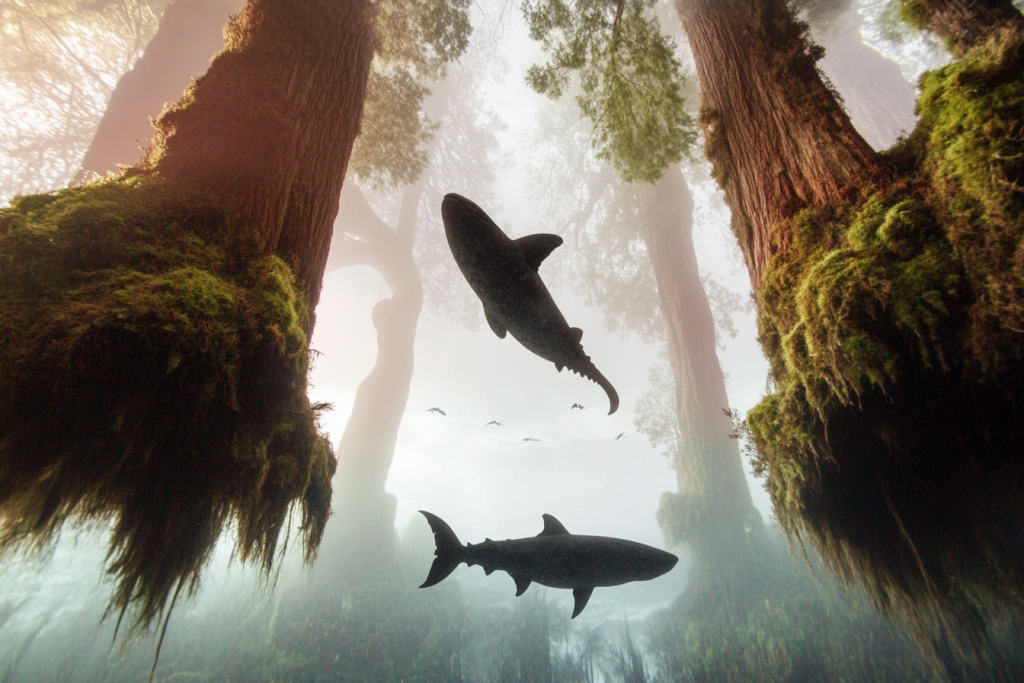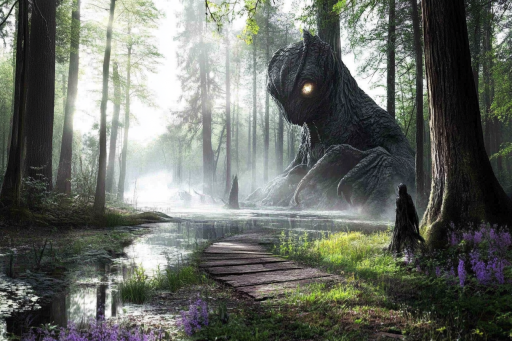
Just when we thought nature had closed the book on certain species, reality throws us a stunning twist. Across land, sea, and sky, creatures once believed lost to extinction have reappeared—some in the most unexpected ways. Whether hiding in deep forests, remote islands, or oceanic depths, these “Lazarus species” remind us that the natural world still holds secrets beyond our imagination. Their reemergence is both a marvel and a mystery, urging us to look closer at what we think we know.
Coelacanth: The Living Fossil

Once thought to have vanished with the dinosaurs, the coelacanth shocked the world when it was found alive in 1938 off the coast of South Africa. This prehistoric fish, with its lobed fins and eerie eyes, dates back over 400 million years. Its discovery not only rewrote fish evolution but also challenged assumptions about marine extinction. The coelacanth now dwells in deep, dark waters—where secrets still swim.
Laotian Rock Rat: The “Lost” Rodent

Dubbed the “living fossil” of rodents, the Laotian rock rat was believed extinct for millions of years—until it turned up in a food market in Laos in 2005. With its bushy tail and squirrel-like body, it belongs to a group thought to have disappeared in the Miocene epoch. Scientists were stunned to find it alive, casually sold alongside everyday meats. Its quiet survival is a reminder that some creatures live right under our noses.
Lord Howe Island Stick Insect

Nicknamed the “tree lobster,” this enormous, armored insect was presumed extinct after rats invaded its island home in the 1920s. But decades later, climbers found a small population surviving on a single, remote sea stack called Ball’s Pyramid. Resilient and bizarre-looking, these insects defied all odds. Conservationists now work to restore their presence to their native island home.
Takahe: The Flightless Survivor

The takahe, a large, flightless bird from New Zealand, was declared extinct in the late 1800s. But in 1948, an expedition discovered a hidden population deep in the remote Murchison Mountains. With its brilliant plumage and stubborn will to survive, the takahe is now one of the most iconic conservation success stories. Protected breeding programs continue to ensure this rare bird’s song is not silenced again.
Wollemi Pine: The Jurassic Tree

Though not an animal, the Wollemi pine earns its place for sheer astonishment. Thought to have gone extinct 2 million years ago, it was found thriving in an Australian canyon in 1994. Botanists compared the discovery to finding a living dinosaur. The trees are now carefully protected, hidden in secrecy to prevent their loss once more.
Cuban Solenodon: Venomous and Elusive

This strange, shrew-like mammal was believed to be extinct until it was rediscovered in the forests of eastern Cuba. With venomous saliva and a snout that wriggles constantly, the Cuban solenodon looks like it belongs in another era. It’s one of the few mammals capable of injecting venom—a trait it’s held onto for millions of years. Its survival is a testament to nature’s ability to surprise.
Tuatara: The Reptile from the Age of Dinosaurs

Native only to New Zealand, the tuatara is often mistaken for a lizard—but it’s the sole survivor of an ancient order that once roamed with dinosaurs. Thought to be extinct on the mainland, it was later found on a few offshore islands. With a third “parietal” eye on its head and a lifespan that can exceed 100 years, the tuatara is a true evolutionary relic. Conservation efforts now protect it from extinction—again.
Terror Skink: The Toothy Comeback

Feared lost forever, this fearsome skink from New Caledonia was rediscovered in 2003. Measuring up to half a meter in length with sharp, predatory teeth, the terror skink lives up to its name. It’s an apex predator among lizards, preying on birds and other reptiles. Rare sightings continue to stun herpetologists and adventurers alike.
Pygmy Tarsier: The Ghost of the Highlands

With enormous eyes and a fragile, elfin appearance, the pygmy tarsier was thought extinct for nearly a century. In 2008, one was accidentally trapped in Indonesia, proving the tiny primate was still alive. Its nocturnal nature and remote habitat helped it evade detection. Seeing it in the wild is like spotting a creature straight out of fantasy.
New Guinea Singing Dog

Famous for its haunting, melodic howls, this dog was believed extinct in the wild until a pack was spotted in the highlands of Papua in 2016. Isolated for thousands of years, these dogs have unique vocalizations and DNA unlike any other canines. Their reemergence offered hope for restoring one of the world’s rarest dog species. Now, researchers are working to ensure their strange songs never fade.
Chacoan Peccary: The Pig That Shouldn’t Be

The Chacoan peccary, a pig-like mammal from South America, was thought extinct based on fossil records alone. Then, in the 1970s, scientists found live specimens wandering the arid Gran Chaco. Adapted to survive harsh, dry environments, this social animal is as tough as it is elusive. Its discovery became one of the most dramatic comebacks in modern zoology.
Bermuda Petrel: Back from the Brink

Once abundant, the Bermuda petrel was declared extinct for over 300 years—until it was astonishingly rediscovered in 1951. Often called the “cahow,” this nocturnal seabird nests in burrows and rarely shows itself during the day. Conservationists are now working to restore its fragile population. It’s one of the rarest seabirds in the world, and every hatchling counts.
Night Parrot: The Avian Phantom

This elusive, nocturnal bird from Australia became legendary for its absence. After being declared extinct for over a century, it was rediscovered in 2013 when one was photographed at night. It’s still incredibly difficult to spot, with only a few sightings each decade. The night parrot remains a feathered enigma—proof that some creatures are better at hiding than we ever imagined.
Nature’s Long Game

Extinction may seem final, but these rediscovered creatures prove that nature plays a much longer game than we often realize. Some species cling to survival in silence, waiting centuries to be seen again. Their unexpected returns challenge our understanding of life’s resilience and the mysteries still hidden on this planet. If these creatures came back—what else is out there, waiting to be found?





